- | 8:00 am
CAA is betting that this rapping metaverse rabbit is the future of music
A metastar is born. But can he make it in the real world?
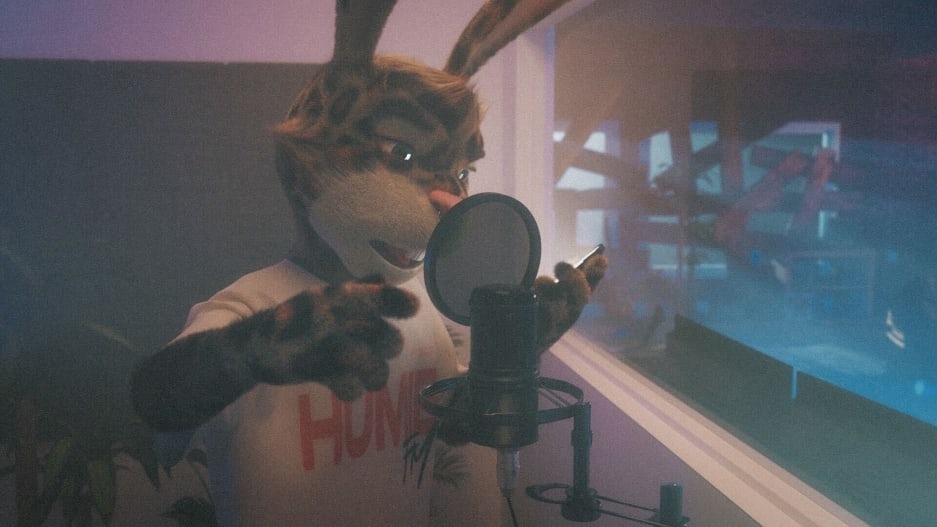
A bear with glowing eyes mixes tracks in an ambient recording studio as “Angelbaby,” a leopard-patterned rabbit with a septum piercing, bobs his head to the beat. Framed portraits of Bored Apes hang on a wall. Angelbaby appears to be in a good mood. The virtual rapper and singer has reason to celebrate: He’s just been signed by the mega talent agency Creative Artists Agency (CAA). Moreover, as Deadline reported, he is among the highest-grossing Web3 musicians; he has played Art Basel; his NFT song drops sell out in seconds.
“wut tf is real anyway?” Angelbaby asks on the website for his label, Hume, where this animation is currently playing. “im from the year 3045 and in my time im stopped from doing anything. I couldnt make music, i couldnt express myself in public. nothing. Imagine everything u do being watched and censored. but 2023 is another fxckin world. since ive been here, ive luved it.”
2023 is another fxckin world, indeed. Hume—which dubs itself the “future of music”—is a metaverse company that builds backstory-driven virtual “metastars” like Angelbaby, fueled by $11.7 million scored last fall in a Series A funding round and the talents of a cofounder who has written music for the likes of Selena Gomez, Carly Rae Jepsen, Dua Lipa, and others.
Pop stars have long been manufactured. Does it matter if they’re not real at all anymore?
DOWN THE RABBIT HOLE
Long before they “met” Angelbaby (more on that in a moment), Hume cofounders David Beiner and Jay Stolar were NYU classmates, best friends, and roommates. After Stolar graduated from the Tisch School of the Arts, he performed in bands and as a solo artist. When Aloe Blacc recorded one of his pieces several years ago, he began to shift his focus to writing and producing. He subsequently wrote for megastars like Demi Lovato and G-Eazy, and also crafted music that appeared in commercial syncs during the Super Bowl and the Olympics.
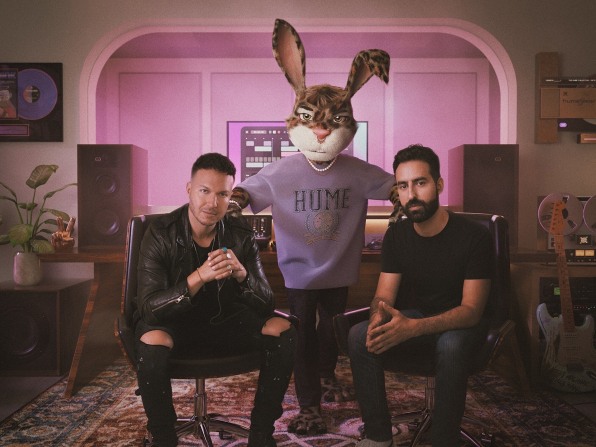
“I liked it,” Stolar says, “but the higher up I got, the more I really saw how much friction there is both creatively and financially in music. You write a song for a great artist, and then the next week they break up with their boyfriend and now they want to make a rock album and they want to throw out everything that you did. Or you write a song, and it’s great, and then the label takes complete control of it and you’re not able to develop something the way that you initially had a vision for it.”
Beiner, meanwhile, worked in branding—and as he watched Stolar toil over writing and producing songs, only for an artist to come in and simply sing over the top of them, he told his roommate that there had to be a better way to make music. This was around 2017, the early halcyon days of Web3, which Beiner had recently gotten into.
“David comes to me one day, and he is so excited,” Stolar recalls. “He’s like, ‘Digital money’s here. Digital people are next.’”
After experimenting with some virtual artist concepts, around 2019 they came up with an idea: to make music the way that Pixar makes movies—and to become the Pixar-quality standard bearer of doing so.
“How do you do what Pixar did with Toy Story [but with] virtual artists?” Stolar asks. “Because when people first saw Toy Story, the reviews weren’t like, ‘This is so amazing for a 3D animated film.’ It was just like, ‘This is one of the best films of the year.’ Heartbreaking story, the relationship between Woody and Buzz. It was just about the characters.”
They went all-in on the idea and came up with the concept for Hume, a studio that would create and manage its talent, which they dubbed “metastars.” Using the blockchain, they sought to build an ecosystem where fans could get more involved with the artists than ever before, becoming a part of their journey through buying music NFTs, or nonfungible tokens (basically an audio file instead of the traditional image of, say, a Bored Ape), and backing them early on, with the monetary value of the pieces growing the more popular an artist becomes.
Hume’s founders also envisioned a system in which holders could vote on which songs become singles, rather than a record label deciding, thus allowing fans to play a part in shaping the artist’s career.
But before all that: They needed proof of concept. They needed an artist. Or rather, they needed to make one.
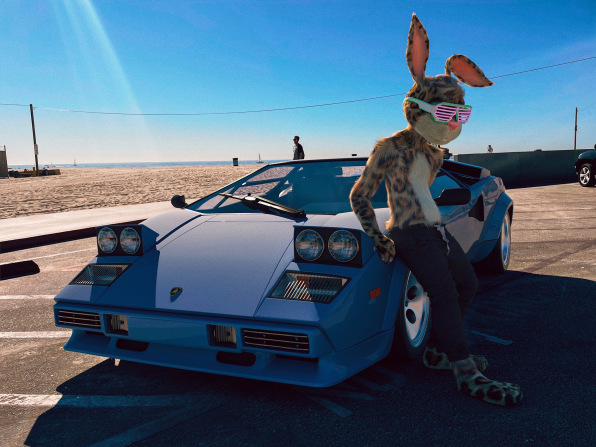
A METASTAR IS BORN
When Stolar and Beiner talk about Angelbaby, they talk about him as if he truly exists. Stolar says this interview is the first time he and Beiner have talked about how Angelbaby was created and designed; and they seem somewhat pained at times while doing so.
Before the music and the design and the NFTs, Stolar focused on story, which he believes is key to successful acts. As examples, he cites the fact that people know Billie Eilish makes music with her brother; they know Justin Bieber’s history with Selena Gomez; and Paul McCartney and John Lennon’s bond over the deaths of their mothers—all mythology and subtext for the songs at hand, and elements that deepen a listener’s connection to them.
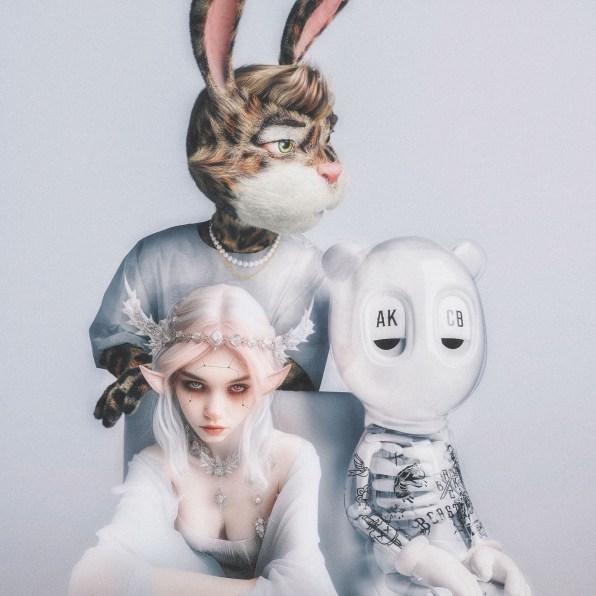
So like many the aspiring novelist, he broke out some Joseph Campbell. For Angelbaby, the team at Hume utilized the classic hero journey model, and developed a sci-fi backstory involving an oppressive regime that favors censorship over creativity. The “Hume Collective,” of which Angelbaby is a part, was formed to fight the system with music and art. In doing so, he lost the love of his life, Clio—Hume’s next virtual artist—when he went through a gate that sent him to Earth in our present. Stolar says Angelbaby, drunk and depressed, “then met me and David and decided to go out into the world.”
Stolar says they analyzed how Angelbaby would think. What his relationship to mortality would be. What his day-by-day calendar would look like. And with the backstory in place, the music came next. Stolar held an intensive songwriting camp, during which he and a team of eight spent five days developing the music. In Angelbaby’s case, the days would begin with a note from Angelbaby himself. As Stolar breaks down one such address, “Hey y’all, I can’t be here today, but today I really want you to focus on my shit with Clio.”
Absurd? Maybe. But, hey, everyone has a creative practice.
“Angelbaby is always real,” Stolar says. “Angelbaby is always in the room. Every tweet, TikTok, music video, the first thing is always like, ‘Well, Angel, what do you want?’ And thinking from that perspective.”
Stolar says that ultimately Hume’s process represents an idealized version of songwriting, in which the only thing that matters is imagination and emotion, and not, say, whether Selena Gomez would sing the words he’d written. Instead of the current compensation model for songwriting—where writers come in on their own dime and don’t get paid for their work until the artists record the songs and revenue rolls out on the back end—Hume has developed its own way of doing things. Hume owns the copyright, and the writers get paid up front, in addition to a royalty share and NFT. The core team currently consists of three songwriters and two producers.
While it may seem a more utopian model of songwriting, admittedly the whole endeavor can feel dystopian at times. But then you hear something like AI-generated “new songs” from Nirvana, and realize it could all be much, much weirder—and darker.
AS FOR THE GIANT RABBIT IN THE ROOM . . .
Hume got its pre-seed money, led by Delphi Digital, in fall 2021, and with Angelbaby’s songs and narrative in hand, the founders needed Angelbaby himself. They discovered Angelbaby’s digital form at NFT purveyor Fluf World, whose output involves a range of rabbit avatars called Flufs. Hume selected a leopard-print character with neon glasses, a bow tie, and a tank top emblazoned with a Jeff Koons-esque balloon dog, and bought it on September 17, 2021, for .990 ETH, which is roughly $1,800 today.
At first this Fluf was a nobody—just an anonymous rabbit among a warren of 10,000 other anonymous digital rabbits. But then Hume grafted a persona onto him and gifted him its songs, and within months, a community of fans began to form in the Web3 space.
Angelbaby’s biggest design test came when Hume got a call from Fluf World in fall 2021: It was going to be hosting a show at Art Basel in three weeks. Could Angelbaby perform live?
Beiner didn’t know if Hume could pull it off.

“There are going to be hundreds of people looking, seeing a bunny singing, rapping, dancing,” he says. “We need to make this bunny so cool and so authentic that they don’t laugh. Because that was the biggest fear: Angelbaby comes on and starts talking, and everyone just starts laughing.”
The team rallied. They took on the vexing design challenge of rendering fur. They carefully planned how Angelbaby would speak and move live. They rolled out mood boards. They utilized their personal experiences as musicians. Hume’s lead 3D artist, Michael Caro, and creative director Ethan Young hyperfocused on Angelbaby’s eyes, so the audience could feel that he was actually looking at them; they created specific morph targets on the 3D rig of Angelbaby’s face so they could control the most subtle aspects of his ocular movements.
Ultimately, they created a show in which Angelbaby performed in 3D on a screen with custom stages and lighting effects that blended the two into a single experience. As Angelbaby took the stage, the Hume team collectively held their breath.
“And then we heard people cheering and starting to take out their phones, and we’re like, Okay. It worked,” Beiner says.
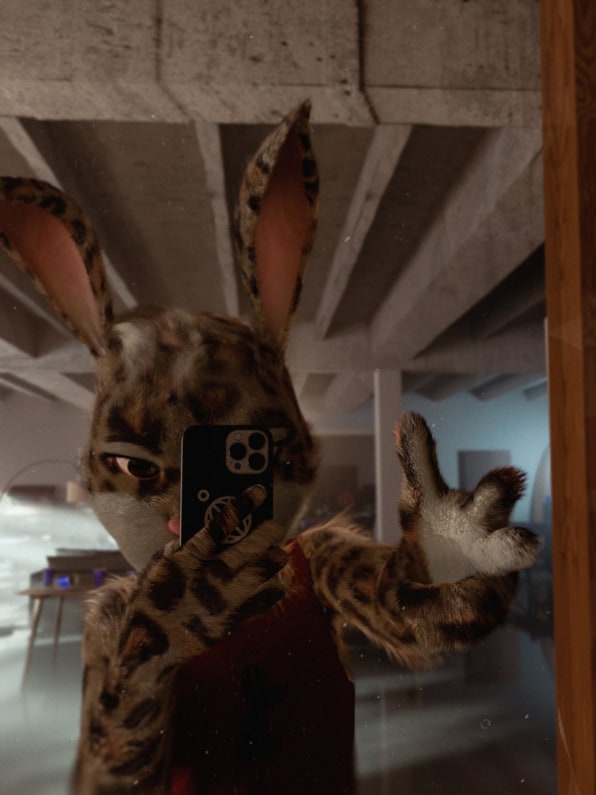
BREAKING OUT OF THE BLOCKCHAIN
Hate the idea of Angelbaby or love the idea of Angelbaby, Beiner is right: It seems to be working, at least in the super-niche realm of metaverse enthusiasts. Angelbaby has had No. 1 hits on OpenSea, the biggest NFT marketplace. In addition to Art Basel, he has performed at South by Southwest. Last September’s funding round was backed by TCG Crypto, Winklevoss Capital, and others. But perhaps the biggest vote of confidence came in late January when Deadline announced that CAA signed Hume and its creations.
Over the past few years, Phil Quist has been one of the figures leading CAA’s Web3 efforts. He long thought there would be an application of blockchain in the entertainment space, and admits that most people didn’t understand it at first—and some still don’t. He signed the über-popular virtual star Lil Miquela, and as he continued his work, he began noticing a theme: Hume’s name kept popping up.
“We’re at an inflection point in where the industry is right now [with] entertainment, music, and Web3,” he says. “They’re really at the center of all three of those, and I think a lot of eyeballs are going to be on them. And they’re going to have a lot of people in their corner rooting for them to succeed. And so I really do think the sky’s the limit for [Hume].”
But is this the future of music?
Quist says he doesn’t think traditional stars are going anywhere, but he does believe virtual artists will have a place alongside them. He adds that music fans perpetually get the same type of concerts with the same type of production, and they want new experiences—and that’s where virtual stars and emerging tech can really make an impact with fresh, more immersive shows.
Ultimately, as Angelbaby attempts to cross into the mainstream, there’s perhaps one thing holding him back: the metaverse where he was born. A reader comment at the bottom of the Deadline announcement might sum it up best for the average media consumer: “What the heck does any of this mean?”

While Hume’s first goal was to make Angelbaby the biggest star of the blockchain realm before expanding beyond its borders—a move that might be critical to Angelbaby’s future given the general volatility of the crypto world—Beiner readily acknowledges that Web3 has massive barriers to entry for the general public.
“The space has been overly financialized,” he says. “You’re not going to get tens of millions, billions of people around the world to be like ‘Thank God I’m using this immutable public ledger, which can be globally recognized and no central authority controls.’”
He adds that the somewhat convoluted fee structure can also be a complicating factor for NFT songs, with the network and gas fees on a $2 track ranging from $2 to $30, depending on factors like how much traffic is on the network on a given day.
For that reason, Angelbaby has a bit of a parallel existence at the moment: the NFT realm and traditional media. He is on TikTok, Spotify, Apple Music, Twitter, Instagram, and other platforms. Those that don’t want to dig into what the NFT side of things has to offer can simply listen to his music via their regular apps, and perhaps make the leap to the other side when their fandom grows.
“I don’t think the people who have come across Angelbaby on Spotify realize there are any music NFTs involved or any of that,” Beiner says. “And I still think about 30% to 50% of the Web3 audience that’s buying these music NFTs doesn’t fully realize Angelbaby is just on Spotify releasing like a normal artist.”
At the moment, the partners say Hume’s primary revenue stream is selling Angelbaby’s songs. Down the line, they see other avenues in live-touring deals, merch, clothing lines, virtual events, and more.
Perhaps the next test: the launch of Angelbaby’s full album in late September. While he hasn’t broken the mainstream barrier of viral success yet, they think he will eventually—and like Quist, they see a future rife with virtual stars alongside traditional ones.
“I do believe this will be a cornerstone of the entertainment industry,” Stolar says. “And it’s going to get to a point where we stop thinking of [them] as separate. And that’s going to be the really powerful moment.”
It may all be batshit crazy. But who knows: It may also be the future.





































